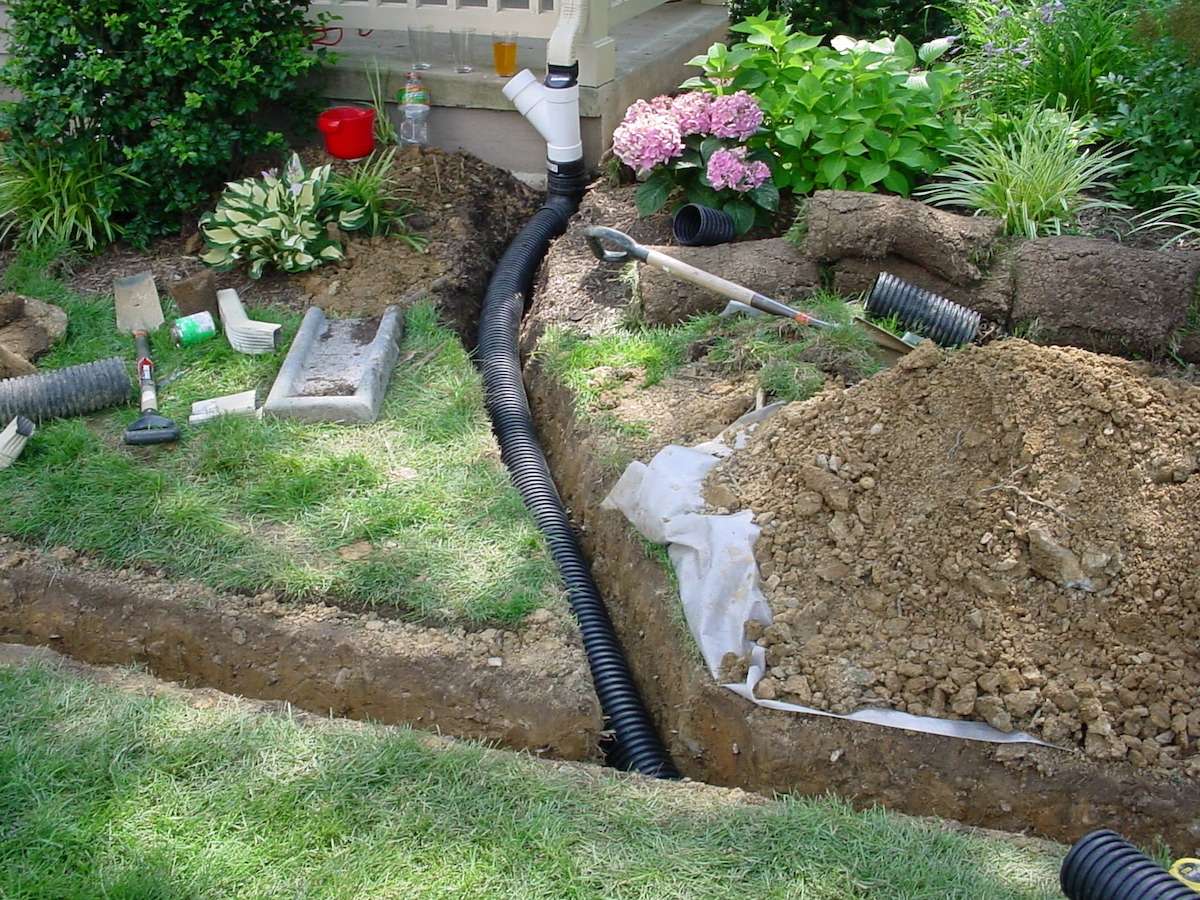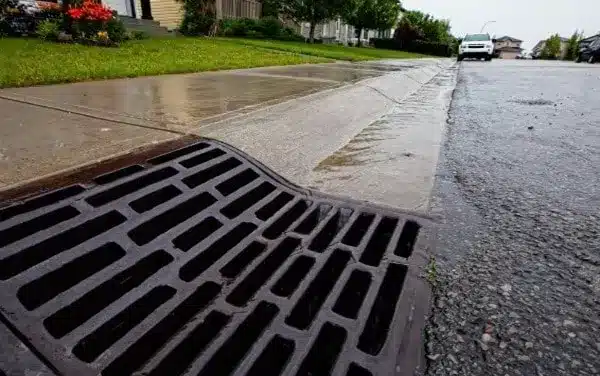Yard Drainage Problems and Solutions
Common garden drainage problems vary, ranging from wet lawns to structural damage to buildings, and are a common concern for homeowners. Proper yard drainage is essential to maintaining a healthy lawn, garden, and even your home’s foundation. This article looks at common yard drainage problems and offers practical solutions to help keep your yard dry.
Let’s Consider the Key, Quite Common Problems of Yard Drainage

Standing water, often found in low-lying areas of the yard, can create a breeding ground for bacteria, mosquitoes, and other pests. Standing water also harms grass and other plants by depriving their roots of oxygen. Improper yard drainage can cause soil erosion, which can cause sinkholes and loss of nutrient-rich topsoil.
This not only affects the aesthetics and attractive visual appearance of your yard but can also threaten the health of the plants. Modern drainage solutions eliminate the problems of poorly functioning drainage of the yard and prevent the appearance of many issues that appear in the yard when the drainage does not fulfill its role.
Water damage to building structures due to non-functioning yard drainage. Poor drainage can cause water to pool near your home’s foundation, which over time can lead to leaks, mold growth, and structural damage to your home. This issue can be costly if not resolved quickly.
Consider Effective Drainage Solutions

To address these key issues, it is important to implement effective drainage solutions. Here are some ways to improve your yard’s drainage:
- Alignment and tilt. One of the easiest solutions is to level your yard so that water drains away from your home into designated drainage areas. As a rule, a slope of approximately 1-2% relative to buildings is sufficient;
- You can build special trenches in your yard filled with gravel and perforated pipes that drain surface and groundwater from the yard. It is an effective solution for yards with serious water retention problems;
- Dry wells are special underground structures that collect and slowly release water into the surrounding soil. They are particularly useful in areas with heavy runoff or poorly drained soil;
- Rain gardens are shallow planted depressions that collect rainwater from roofs, driveways, and lawns. They not only help drain water but also beautify the landscape and support local nature;
- Permeable paving is a rather interesting and modern solution (which is also quite effective) that provides yard drainage. Using permeable pavers on driveways, sidewalks, and patios allows water to penetrate and soak into the soil, reducing runoff and improving yard drainage;
- Extenders of gutters and downspouts. By keeping your gutters clean and your downspouts away from your home’s foundation, you can prevent water from pooling near your home.
Assessment of Key Yard Drainage Issues

Before implementing certain solutions, it is important to thoroughly assess the current extent of your yard’s drainage problems. Here are some key steps to evaluating your yard’s drainage. The best time to assess your yard’s drainage problems is during or immediately after a rainstorm. Pay attention to places where water collects or does not flow properly.
Check the composition of the soil. Different soils have different drainage capacities. For example, clay soil holds water longer than sandy soil. Knowing your soil type will help you choose the right drainage for your yard.
Check gutters and downspouts. Make sure gutters are clear of debris and downspouts direct water away from your home. Overflowing gutters can exacerbate drainage problems in the yard.
Do It Yourself vs. Professional Solutions
Although many drainage solutions can be implemented independently, in some cases the help of professionals is necessary. For example, installing a drainage pipe or remodeling a yard can be a complex decision that will require professional knowledge from you. However, simple repairs like cleaning gutters and downspout extensions are easy for most homeowners to complete.
Cost Considerations
The cost of yard drainage solutions can vary greatly depending on the severity of the problem and the method chosen. Here is a table with the approximate costs of various solutions:
| Drainage Solution | Estimated Cost Range (USD) |
| №1 Grading and Sloping | $1,000 – $3,000 |
| №2 French Drains | $2,000 – $6,000 |
| №3 Dry Wells | $1,500 – $4,000 |
| №4 Rain Gardens | $500 – $3,000 |
| №5 Permeable Pavers | $8 – $20 per square foot |
| №6 Gutter Extensions | $10 – $50 per downspout |
Quick, Efficient, and Easy Solutions for Yard Drainage
Once you’ve identified the problem and the most likely cause, you can use one of the following lawn drainage solutions. If there is no obvious reason for drainage problems, you may be over-draining your yard or garden. Reduce watering and see if problem areas improve.
In this case, the soil may drain properly, but simply cannot keep up with the watering schedule. Add more soil. If your yard only has a few flat spots that collect water after it rains, add soil to the spots where the soil is uneven. Just sprinkle topsoil over these areas and see what happens after the rain.
Do you think your garden needs a thorough slope correction? Place a level on the ground right around the foundation of the house. When properly graded, the soil sinks about an inch for every foot it moves away from the house. If not, add more land around the house.
If you notice that the rainwater that is causing drainage problems in your yard is coming from the gutter system, try routing the downspout away from the house so that it does not cause drainage problems. Be sure to direct the extended drain pipe toward a storm drain or other safe drainage area.
Clogged or damaged gutters can overflow, causing expensive damage. If your roof always turns into a waterfall when it rains, it’s time to fix your gutters. At least check them for dirt and pests.
Proper Maintenance
Proper maintenance of a yard’s drainage system is an important aspect of its longevity and efficiency. Here are some tips for maintaining your drainage solutions: Keep gutters, downspouts, and drain grates clear of debris so water can flow freely through them.
After heavy rains, check your yard for new drainage problems or damage to existing solutions. Make sure your plants absorb and filter water effectively. Keep the soil healthy by adding organic matter and avoiding compaction. Healthy soil can hold more water and improve overall drainage.
Addressing garden drainage is a key decision in maintaining a healthy and attractive landscape. By understanding common problems and finding effective solutions, you can protect your yard and home from damage from water flooding your yard from a malfunctioning drainage system. More information and professional advice on effective drainage solutions can be found at Vodaland.







